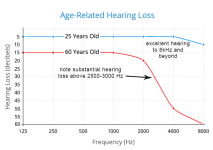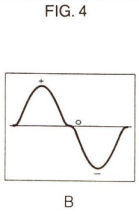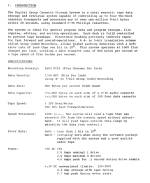cj7hawk
Veteran Member
Hi all,
I was just wondering what the top practical speed is for storing information on normal audio cassettes.
I was just trying a 1980s era tape with a mono tape recorder, and found it was relatively reliable past 8 KHz, so that made me wonder just how fast tape saving might have gotten had disk drives not come along?
Many tape schemes used either tonal methods or flux reversal recording in different ways. The Spectrum for example stored a 1's at 1023baud and 0's at 2047baud and a mix produced something generally in between.
But that is unbalanced, and doesn't allow for different tape speeds of reading and writing.
Magstrip data used biphase ( FM ) and could allow hand running, because it reset the bit rate with every but - as long as the speed didn't change more than 50% between bits, it can recover the clock and the data.
So if something like FM was used in software with something like a z80, what is the fastest practical speed for saving and writing data to a tape cassette for moving large amounts of data in the 128K+ era had disks not come down in price?
I'm guessing something as much as 16Kbps using MFM would not be out of the question. Which would load an entire 128K of memory from a cassette in just a touch over a minute and could deal with inter-bit changes to the baud rate as well.
Are there any examples of better use of the cassette's natural bandwidth back in the 80s? ( or using similar technology more recently? )
Thanks
David.
I was just wondering what the top practical speed is for storing information on normal audio cassettes.
I was just trying a 1980s era tape with a mono tape recorder, and found it was relatively reliable past 8 KHz, so that made me wonder just how fast tape saving might have gotten had disk drives not come along?
Many tape schemes used either tonal methods or flux reversal recording in different ways. The Spectrum for example stored a 1's at 1023baud and 0's at 2047baud and a mix produced something generally in between.
But that is unbalanced, and doesn't allow for different tape speeds of reading and writing.
Magstrip data used biphase ( FM ) and could allow hand running, because it reset the bit rate with every but - as long as the speed didn't change more than 50% between bits, it can recover the clock and the data.
So if something like FM was used in software with something like a z80, what is the fastest practical speed for saving and writing data to a tape cassette for moving large amounts of data in the 128K+ era had disks not come down in price?
I'm guessing something as much as 16Kbps using MFM would not be out of the question. Which would load an entire 128K of memory from a cassette in just a touch over a minute and could deal with inter-bit changes to the baud rate as well.
Are there any examples of better use of the cassette's natural bandwidth back in the 80s? ( or using similar technology more recently? )
Thanks
David.






